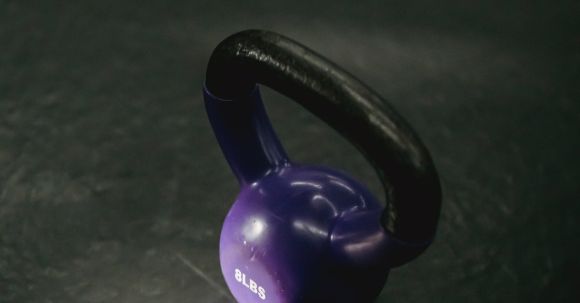Running is an excellent form of exercise that helps improve cardiovascular fitness and endurance. However, many runners overlook the importance of incorporating strength training into their routine. Strength training not only helps prevent injuries but also enhances running performance by improving muscle strength and power. In this article, we will discuss how you can effectively incorporate strength training into your running routine.
Author: fit-on
Strength training is an essential component of any fitness routine. It not only helps build muscle and increase strength, but it also improves overall fitness and enhances athletic performance. While there are countless exercises you can do to enhance your strength, using the right tools can take your training to the next level. In this article, we will explore five effective strength training tools that you should try to maximize your results.
Resistance Bands: Versatile and Portable
Resistance bands are a versatile and portable strength training tool that can be used anywhere, making them perfect for home workouts or when you're on the go. These bands come in various resistance levels, allowing you to adjust the intensity of your workouts. They can be used to target different muscle groups, including the arms, legs, and core. Whether you're a beginner or an advanced fitness enthusiast, resistance bands can provide a challenging workout and help you develop strength and stability.Kettlebells: Full-Body Conditioning
Kettlebells are a popular strength training tool that offers a unique and effective way to target multiple muscle groups simultaneously. With their off-centered weight distribution, kettlebell exercises engage your core, improve balance, and enhance functional strength. From swings to cleans and snatches, there is a wide range of exercises you can perform with kettlebells to develop strength and power. Whether you're looking to improve your athletic performance or tone your body, incorporating kettlebell exercises into your routine can yield impressive results.Dumbbells: Classic and Effective
Dumbbells are a classic strength training tool that can be found in almost every gym. They are incredibly versatile and can be used to target specific muscle groups or perform full-body exercises. Dumbbell exercises allow for a greater range of motion and provide better muscle activation compared to machines. From bicep curls to shoulder presses and lunges, the possibilities are endless with dumbbells. Regardless of your fitness level, incorporating dumbbell exercises into your routine will help you build strength and increase muscle mass.Medicine Balls: Functional and Dynamic
Medicine balls are a functional and dynamic strength training tool that can be used to improve power, explosiveness, and coordination. Whether you're performing medicine ball slams, rotational throws, or partner exercises, medicine balls engage multiple muscle groups and challenge your stability. They are particularly beneficial for athletes looking to enhance their performance in sports that require explosive movements, such as basketball or tennis. Adding medicine ball exercises to your routine will help you develop functional strength and improve your overall athletic ability.Suspension Trainers: Bodyweight Resistance
Suspension trainers, such as TRX, provide a unique way to incorporate bodyweight resistance into your strength training routine. These tools use suspension straps that allow you to perform a wide range of exercises targeting various muscle groups. Suspension trainers challenge your core stability and improve overall body strength. From push-ups and rows to lunges and planks, suspension trainers offer endless possibilities for a challenging and effective workout. Whether you're a beginner or an advanced athlete, incorporating suspension training into your routine will help you build strength and improve your body composition. In conclusion, incorporating effective strength training tools into your fitness routine can significantly enhance your results. Whether you choose resistance bands for their versatility, kettlebells for full-body conditioning, dumbbells for classic exercises, medicine balls for dynamic movements, or suspension trainers for bodyweight resistance, each tool offers unique benefits to help you build strength, increase muscle mass, and improve athletic performance. So, don't be afraid to try these tools and take your strength training to the next level.
Traveling is an exciting and enriching experience, but it can also disrupt our usual exercise routines. Whether you're on a business trip or enjoying a vacation, it's important to find ways to stay active and maintain a healthy lifestyle. Here are some tips to help you stay active while traveling.
Explore the City on Foot
Walking is one of the best ways to stay active while traveling. Instead of relying on taxis or public transportation, consider exploring the city on foot. Not only will you get to see more of the city and soak in its atmosphere, but you'll also burn calories and stay active. Don't be afraid to take detours and wander off the beaten path – you never know what interesting sights you might discover.Take Advantage of Hotel Facilities
Many hotels have fitness centers and swimming pools that guests can use. Take advantage of these facilities to get in a quick workout or go for a swim. Even if you're not a gym enthusiast, a short workout or a few laps in the pool can help you stay active and feel refreshed.Embrace Outdoor Activities
If you're traveling to a destination known for its outdoor activities, seize the opportunity to try something new. Whether it's hiking, biking, kayaking, or surfing, engaging in outdoor activities is a great way to stay active and explore the natural beauty of your destination. Plus, it adds an element of adventure and excitement to your trip.Find Active Alternatives
If the weather is not cooperating or you're in a city with limited outdoor options, look for active alternatives. Many cities have indoor rock climbing gyms, trampoline parks, or fitness studios where you can try a new class or activity. These alternatives not only keep you active but also provide a fun and unique experience.Pack Exercise Equipment
If you prefer to exercise in the comfort of your hotel room, consider packing lightweight exercise equipment that doesn't take up much space. Resistance bands, jump ropes, and yoga mats are all portable and versatile options that allow you to work out anywhere. With these tools, you can do a quick workout in your hotel room before starting your day or wind down with some stretches before bed.Stay Active during Transit
Long flights or train rides can be a sedentary experience, but there are ways to stay active even while in transit. Take breaks to walk around the cabin or stretch your legs whenever possible. You can also do simple exercises like leg lifts, shoulder rolls, or deep breathing exercises to keep your body moving and prevent stiffness.Prioritize Sleep and Recovery
While staying active is important, it's equally important to prioritize sleep and recovery while traveling. Lack of sleep can leave you feeling tired and unmotivated to exercise. Aim for quality sleep by creating a comfortable sleep environment and sticking to a regular sleep schedule. Additionally, don't forget to give your body time to rest and recover after intense physical activities.Incorporate Physical Activities into Sightseeing
Instead of solely relying on traditional sightseeing methods, try incorporating physical activities into your sightseeing itinerary. Consider renting a bike to explore the city or taking a walking tour instead of a bus tour. This way, you'll get to see the sights while staying active and engaging with your surroundings. In conclusion, staying active while traveling is possible with a little planning and creativity. By incorporating these tips into your travel routine, you can maintain an active lifestyle and make the most of your travel experience. So, get out there and explore, all while keeping your health and fitness in mind!
Losing weight and getting fit is a goal that many of us strive for. However, with so many weight loss programs out there, it can be overwhelming to know where to start. That's where Fit on comes in. Fit on offers a range of weight loss programs that can help you transform your life and achieve your fitness goals. In this article, we will explore how Fit on weight loss programs can benefit you and why they are worth considering.
The Power of a Personalized Approach
One of the key benefits of Fit on weight loss programs is the personalized approach they offer. Unlike generic weight loss programs, Fit on takes into account your unique needs, preferences, and lifestyle. By tailoring the program to you, Fit on ensures that you are more likely to stick to it and see results. Whether you prefer high-intensity workouts, yoga, or a combination of both, Fit on can create a program that suits your needs.Effective Workouts without the Hassle
One common barrier to starting a weight loss program is the perceived difficulty and inconvenience of working out. Fit on eliminates this barrier by providing effective workouts that you can do from the comfort of your own home. With a range of workout videos and programs available, you can easily fit your workouts into your schedule. No more rushing to the gym or feeling self-conscious in a crowded fitness class. Fit on brings the gym to you.Nutrition Guidance for Lasting Results
In addition to workouts, proper nutrition plays a crucial role in weight loss. Fit on weight loss programs include comprehensive nutrition guidance to help you make healthier choices and achieve lasting results. From meal plans to recipe ideas, Fit on provides the tools and support you need to make sustainable changes to your eating habits. By focusing on nourishing your body with the right foods, you can fuel your workouts and see the progress you desire.Motivation and Support Every Step of the Way
Starting a weight loss journey can be daunting, but with Fit on, you don't have to go it alone. Fit on weight loss programs offer motivation and support every step of the way. From virtual trainers who guide you through workouts to a supportive community of like-minded individuals, Fit on creates an environment that keeps you motivated and accountable. With regular check-ins and progress tracking, you can stay on track and celebrate your achievements along the way.A Lifestyle Change, Not a Quick Fix
Unlike fad diets and quick fixes, Fit on weight loss programs focus on creating lasting lifestyle changes. By incorporating exercise and healthy eating into your daily routine, you can achieve sustainable weight loss and maintain your results long-term. Fit on provides you with the tools, knowledge, and support to make these changes, so you can transform your life and enjoy a healthier, more active lifestyle. In conclusion, Fit on weight loss programs offer a personalized approach, effective workouts, nutrition guidance, motivation, and support to help you achieve your fitness goals. By choosing Fit on, you are choosing a lifestyle change, not a quick fix. So why wait? Transform your life with Fit on weight loss programs and start your journey to a healthier, fitter you today.
Are you tired of tossing and turning at night, unable to fall asleep? Do you find yourself waking up multiple times during the night, feeling restless and unable to get back to sleep? If so, you're not alone. Insomnia affects millions of people worldwide, making it difficult to function during the day and negatively impacting overall well-being. While there are various remedies and medications available, one effective and natural solution to overcome insomnia is through meditation exercises. In this article, we will explore how meditation can help you sleep better and provide you with practical exercises to incorporate into your daily routine.
Understanding Insomnia
Before we delve into the benefits of meditation exercises, let's briefly understand what insomnia is. Insomnia is a sleep disorder characterized by difficulty falling asleep or staying asleep, resulting in poor sleep quality and daytime fatigue. It can be caused by various factors, including stress, anxiety, depression, and lifestyle choices. While short-term insomnia may be linked to temporary stressors, chronic insomnia can have a significant impact on one's physical and mental health if left untreated.The Role of Meditation in Overcoming Insomnia
Meditation is a practice that involves training the mind to focus and redirect thoughts. It has been practiced for centuries and is known for its numerous benefits, including stress reduction, improved concentration, and enhanced overall well-being. When it comes to insomnia, meditation can be particularly helpful in calming the mind, reducing anxiety, and promoting relaxation. By incorporating meditation exercises into your daily routine, you can create a peaceful and conducive environment for sleep.Meditation Exercises for Better Sleep
1. Mindful Breathing: Find a comfortable position, close your eyes, and focus on your breath. Inhale deeply through your nose, feeling your abdomen rise, and exhale slowly through your mouth, feeling the tension leaving your body. Repeat this process while keeping your attention solely on your breath. By practicing mindful breathing, you can quiet your mind and prepare your body for a restful night's sleep. 2. Progressive Muscle Relaxation: Start by tensing and relaxing each muscle group in your body, starting from your toes and working your way up to your head. Focus on each muscle group individually, tensing it for a few seconds, and then releasing the tension. This exercise helps release physical tension and promotes a state of deep relaxation, making it easier to fall asleep. 3. Guided Visualization: Imagine yourself in a peaceful and serene location, such as a beach or a forest. Engage your senses and visualize the sights, sounds, and smells of this tranquil place. By immersing yourself in this visualization, you can create a calming mental environment conducive to sleep. 4. Loving-Kindness Meditation: This meditation practice involves directing positive thoughts and well-wishes towards yourself and others. Start by focusing on yourself and silently repeat phrases such as "May I be happy, may I be healthy, may I sleep peacefully." Then, extend these wishes to loved ones, acquaintances, and even those you may have difficulties with. This practice promotes feelings of compassion and relaxation, allowing your mind to let go of any negative thoughts or worries. Incorporating these meditation exercises into your daily routine can significantly improve your sleep quality and help overcome insomnia. Remember to be patient and consistent with your practice, as it may take time to see noticeable results. By dedicating a few minutes each day to meditation, you can create a peaceful and restful sleep environment, leading to better overall well-being. So, why not give it a try tonight? Your mind and body will thank you for it.
Fats have long been demonized in the world of nutrition. They have been blamed for weight gain, heart disease, and a variety of other health problems. However, recent research has shed light on the important role that fats play in a healthy diet. In fact, fats are an essential nutrient that our bodies need to function properly. In this article, we will explore the role of fats in a healthy diet and discuss the different types of fats and their benefits.
Understanding Fats
Fats are one of the three macronutrients that our bodies need to survive, along with carbohydrates and proteins. They are a concentrated source of energy, providing nine calories per gram, compared to four calories per gram for carbohydrates and proteins. Fats are also responsible for transporting fat-soluble vitamins, such as vitamins A, D, E, and K, throughout the body. They also help to insulate and protect our organs, regulate body temperature, and promote healthy cell function.Types of Fats
Not all fats are created equal. There are four main types of fats: saturated fats, trans fats, monounsaturated fats, and polyunsaturated fats. Saturated fats are found primarily in animal products, such as meat and dairy, as well as in certain tropical oils, like coconut and palm oil. Trans fats, on the other hand, are artificially created through a process called hydrogenation, which turns liquid oils into solid fats. These fats are commonly found in processed foods, such as baked goods and fried foods. Monounsaturated fats and polyunsaturated fats are considered the healthier fats. Monounsaturated fats can be found in foods like avocados, nuts, and olive oil. These fats have been shown to improve heart health and reduce inflammation in the body. Polyunsaturated fats can be further divided into omega-3 and omega-6 fatty acids. Omega-3 fatty acids are found in fatty fish, flaxseeds, and walnuts, and have been linked to numerous health benefits, including reducing the risk of heart disease and improving brain function.The Benefits of Fats
Contrary to popular belief, fats are not the enemy when it comes to weight management. In fact, including healthy fats in your diet can actually help you feel fuller for longer and reduce cravings for unhealthy foods. Fats also play a crucial role in hormone production and regulation, which can impact mood, energy levels, and overall well-being. Additionally, certain fats, like omega-3 fatty acids, have been shown to have anti-inflammatory properties, which can help reduce the risk of chronic diseases, such as heart disease, diabetes, and cancer.Incorporating Fats into Your Diet
To incorporate fats into your diet in a healthy way, it's important to focus on consuming the right types and in moderation. Aim to include a variety of healthy fats in your meals, such as avocados, nuts, seeds, olive oil, and fatty fish. Limit your intake of saturated fats and trans fats, which can increase your risk of heart disease and other health problems. Be mindful of portion sizes, as fats are high in calories and can contribute to weight gain if consumed in excess. In conclusion, fats are an essential part of a healthy diet and play a crucial role in our overall well-being. By understanding the different types of fats and incorporating them into our meals in moderation, we can reap the numerous benefits that fats have to offer. So, don't fear fats - embrace them as a vital component of a balanced and nutritious diet.
In recent years, weightlifting has gained popularity among women as a way to improve their strength, physique, and overall health. Gone are the days when weightlifting was seen as a male-dominated activity. Today, women of all ages and fitness levels are reaping the numerous benefits that weightlifting has to offer. In this article, we will explore the advantages of weightlifting for women and why it should be an essential part of every woman's fitness routine.
Builds Lean Muscle Mass
One of the primary benefits of weightlifting for women is the ability to build lean muscle mass. Contrary to popular belief, weightlifting does not make women bulky or masculine. Instead, it helps shape and tone the body, resulting in a lean, sculpted physique. By engaging in resistance training, women can target specific muscle groups, such as the arms, legs, and core, to improve their overall strength and definition.Increases Metabolism
Weightlifting has been found to increase metabolism, making it an effective tool for weight management. As women age, their metabolism naturally slows down, leading to weight gain and a decrease in energy levels. By incorporating weightlifting into their fitness routine, women can boost their metabolism and burn more calories throughout the day. This increased metabolic rate not only aids in weight loss but also improves overall energy levels and enhances overall well-being.Strengthens Bones and Reduces the Risk of Osteoporosis
Another significant benefit of weightlifting for women is its positive impact on bone health. As women age, they become more susceptible to osteoporosis, a condition characterized by weak and brittle bones. Weightlifting helps combat this by stimulating bone growth and increasing bone density. The resistance placed on the bones during weightlifting exercises promotes the formation of new bone tissue, making them stronger and less prone to fractures.Improves Posture and Balance
Weightlifting exercises, particularly those targeting the back and core muscles, can greatly improve posture and balance. Many women spend long hours sitting at a desk or performing repetitive tasks, leading to poor posture and muscle imbalances. Weightlifting helps correct these issues by strengthening the muscles responsible for maintaining proper posture and balance. By incorporating exercises such as deadlifts, squats, and rows into their routine, women can develop a strong and stable core, leading to better overall posture and reduced risk of injury.Boosts Confidence and Mental Well-being
Weightlifting is not just about physical health; it also has numerous mental and emotional benefits for women. Engaging in regular weightlifting sessions can significantly boost self-confidence and improve body image. As women see their strength and fitness levels improve, they gain a sense of accomplishment and empowerment. Additionally, weightlifting has been found to reduce stress, anxiety, and symptoms of depression. The release of endorphins during exercise helps elevate mood and promote a positive mental state.Conclusion: A Strong Foundation for Women's Health
In conclusion, weightlifting offers a myriad of benefits for women. From building lean muscle mass and increasing metabolism to improving bone health and enhancing mental well-being, weightlifting provides a strong foundation for overall health and fitness. By incorporating weightlifting into their routine, women can achieve their fitness goals, improve their physical appearance, and boost their confidence. So, ladies, it's time to pick up those weights and start reaping the many benefits that weightlifting has to offer!
High blood pressure, also known as hypertension, is a common health problem that affects millions of people worldwide. If left untreated, it can lead to serious complications such as heart disease and stroke. One effective way to manage high blood pressure is through regular cardiovascular exercise. In this article, we will explore the benefits of cardiovascular exercise in reducing high blood pressure and discuss some of the best exercises to incorporate into your fitness routine.
Understanding High Blood Pressure
Before delving into the world of cardiovascular exercise, it's important to understand what high blood pressure is and how it affects your body. High blood pressure occurs when the force of blood against the walls of your arteries is consistently too high. This can lead to damage to your blood vessels and organs, putting you at risk for heart disease, stroke, and other health problems.The Benefits of Cardiovascular Exercise
Engaging in regular cardiovascular exercise has numerous benefits for your overall health, including the ability to reduce high blood pressure. When you engage in aerobic activities, your heart rate increases, which strengthens your heart and improves its ability to pump blood. This, in turn, helps to lower your blood pressure over time.Best Cardiovascular Exercises for High Blood Pressure
1. Walking: Walking is a simple yet effective exercise that can be done by people of all fitness levels. Aim for at least 30 minutes of brisk walking most days of the week to reap the blood pressure-lowering benefits. 2. Swimming: Swimming is a low-impact exercise that is gentle on the joints while providing a great cardiovascular workout. Whether you choose to swim laps or participate in a water aerobics class, swimming can help lower your blood pressure. 3. Cycling: Cycling is an excellent way to get your heart pumping and your blood flowing. Whether you prefer outdoor cycling or using a stationary bike, aim for at least 30 minutes of moderate-intensity cycling several times a week. 4. Dancing: Dancing is not only a fun way to move your body, but it also helps improve cardiovascular fitness. Whether you join a dance class or simply dance around your living room, make sure to choose vigorous dance styles to get the most benefits. 5. High-Intensity Interval Training (HIIT): HIIT workouts consist of short bursts of intense exercise followed by periods of rest. These workouts are particularly effective at lowering blood pressure and improving overall cardiovascular health.Incorporating Cardiovascular Exercise into Your Routine
To effectively reduce high blood pressure, it's important to make cardiovascular exercise a regular part of your routine. Start by setting realistic goals and gradually increasing the duration and intensity of your workouts. Remember to warm up before each session and cool down afterward to prevent injury. Additionally, it's crucial to listen to your body and consult with a healthcare professional if you have any underlying health conditions or concerns.Conclusion
Regular cardiovascular exercise is a powerful tool in managing and reducing high blood pressure. By incorporating activities such as walking, swimming, cycling, dancing, and HIIT into your fitness routine, you can improve your cardiovascular health and lower your blood pressure. Remember to start slowly, set realistic goals, and always prioritize your safety and well-being. With consistency and dedication, you can take control of your blood pressure and enjoy a healthier, happier life.
In order to excel in any sport, it is important to focus not only on the specific skills required for that sport, but also on developing the physical abilities needed to perform at a high level. Sports-specific exercises are designed to target the muscles and movements used in a particular sport, helping athletes to improve their performance and take their skills to new heights. Whether you're a basketball player looking to increase your vertical jump or a tennis player aiming to improve your agility, incorporating sports-specific exercises into your training routine can give you the edge you need to succeed.
Enhancing Power and Explosiveness
Power and explosiveness are crucial attributes in many sports, such as basketball, soccer, and track and field. These qualities enable athletes to generate quick bursts of energy and perform explosive movements. To develop power and explosiveness, exercises like plyometrics and Olympic lifts can be highly effective. Plyometrics involve rapid, explosive movements such as box jumps and medicine ball throws, while Olympic lifts like the clean and jerk and snatch focus on full-body power and coordination. By incorporating these exercises into your training regimen, you can improve your ability to generate explosive force and enhance your overall performance on the field or court.Improving Speed and Agility
Speed and agility are key components of success in sports such as soccer, football, and tennis. Being able to quickly change direction, accelerate, and decelerate can give you a significant advantage over your opponents. Sports-specific exercises that target speed and agility include ladder drills, cone drills, and shuttle runs. These exercises help to improve your footwork, reaction time, and coordination, allowing you to move more efficiently and effectively on the field or court. By dedicating time to these exercises, you can enhance your speed and agility, giving you the ability to outmaneuver your opponents and perform at a higher level.Building Endurance and Stamina
Endurance and stamina are important in sports that require prolonged periods of physical exertion, such as distance running, cycling, and swimming. To build endurance and stamina, sports-specific exercises that focus on cardiovascular fitness are essential. These can include activities such as running, cycling, swimming, or circuit training. By incorporating these exercises into your training routine, you can improve your aerobic capacity, allowing you to sustain high levels of effort for longer periods of time. This increased endurance and stamina can give you the ability to outlast your opponents and maintain a high level of performance throughout a game or competition.Preventing Injuries
In addition to enhancing performance, sports-specific exercises can also help to prevent injuries. By strengthening the muscles and joints used in a particular sport, athletes can reduce their risk of common injuries such as sprains, strains, and tears. Exercises that focus on balance, stability, and core strength, such as yoga, Pilates, and stability ball exercises, can help to improve overall body control and reduce the likelihood of injury. By incorporating these exercises into your training routine, you can not only take your skills to new heights but also ensure that you stay healthy and injury-free.Conclusion: Taking Your Skills to New Heights
Sports-specific exercises are a valuable tool for athletes looking to take their skills to new heights. By focusing on enhancing power and explosiveness, improving speed and agility, building endurance and stamina, and preventing injuries, athletes can develop the physical abilities needed to excel in their chosen sport. By incorporating these exercises into their training routine, athletes can unlock their full potential and reach new levels of performance. So, whether you're a basketball player, a soccer player, or a swimmer, don't overlook the importance of sports-specific exercises in taking your skills to the next level.
Eating healthy doesn't have to break the bank. With some strategic planning and smart choices, you can nourish your body while sticking to a budget. Here are some tips to help you eat healthy without spending a fortune.









